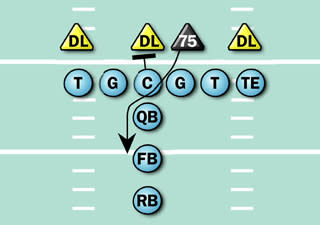Roaming Suh key to improving Lions pass D
Also in this article:
Next Surveillance:
Rams
More NFL:
Editor's note: Yahoo! Sports will examine the biggest weakness of the 2009 season for every team and explain how the franchise can address the issue. The series begins with the Lions, who finished fourth in the NFC North (2-14).
Biggest problem in 2009: Pass defense

Suh, the first of two Lions first-round picks, goes through drills during rookie minicamp in April.
(Leon Halip-US Presswire)
When Jim Schwartz was hired as the Detroit Lions head coach before the 2009 season, he knew that it would take more than a tub of roster Spackle to undo years of franchise mismanagement under former general manager Matt Millen. One of the primary reasons the Lions became the first team to lose all their games in a 16-game season in 2008 was a defense for which the term “pathetic” would be charitable. Despite Schwartz's experience as a top-notch defensive coordinator with the Tennessee Titans, there was only so much he could fix in his first season.
As a result, Detroit's defense – especially its secondary – was a total disaster in 2009. By any statistical measure, the Lions squad proved incapable of stopping anyone. Only the Miami Dolphins allowed more yards per attempt than Detroit's 8.2, and no defense came close to the 107.0 passer rating opposing quarterbacks were allowed to create. To put that number in perspective, Brett Favre(notes) finished second in passer rating last year (just behind Drew Brees(notes)) with a 107.2 rating. Basically, everyone who threw passes against the Lions walked away looking like a future Hall-of-Famer. How will Schwartz and defensive coordinator Gunther Cunningham fix this issue?
The 2010 solution: Use Suh as a moving target

Houston
The Lions traded for Atlanta Falcons cornerback Chris Houston(notes) in the offseason, and safety Louis Delmas(notes) is an emerging star. But personnel moves in the secondary fall far short of bringing this defensive backfield up to even league average. Schwartz's mindset is simple, and reflects his time in Tennessee: The trick to improving your secondary by proxy is to bulk up your pass rush, making things much harder for opposing quarterbacks to get the ball out of their hands in the first place. Detroit amassed just 26 sacks in 2009, fourth-worst in the league. How much of that abysmal pass defense had to do with quarterbacks being free to do what they wanted in the pocket?
In Tennessee, Schwartz had two mainstays in his front four: end Kyle Vanden Bosch(notes) and tackle Albert Haynesworth(notes). The Lions signed Vanden Bosch as a free agent, and used the second overall draft pick to take former Nebraska tackle Ndamukong Suh(notes). There's no question that Suh will be Schwartz's new Haynesworth, but it's my belief that Suh can do even more than Haynesworth did at his best. Haynesworth was primarily a forward-moving tackle who took up double- and triple-teams at the line, allowing others to crash through and make plays. With his amazing combination of strength and speed, Suh can be used to disrupt the passing game in other ways.
The Stunt 4-3

Expect to see the Lions do other stunts with Suh – the Titans liked the typical end-tackle stunt with Vanden Bosch looping inside and Haynesworth flowing outside to seal the edge. The idea with such stunts is to cause confusion along the offensive line, drawing double-teams in the wrong places and opening up easy lanes for pass pressure.
In the past, I've compared Suh to Pittsburgh Steelers Hall-of-Famer Mean Joe Greene, and there's one technique Greene used to employ in the mid-70s that Suh might find tremendously beneficial. The Steelers would line Greene up shading over the guard, and he would then move inside to the center-guard gap. Greene then tilted his body at an approximate 45-degree angle to the center, and would blow past the center as the center fired out for his initial block (right). The key to this stunt concept was to put the other tackle directly over the center's helmet, forcing him to leave the gap Greene was just about to occupy. Once Greene was in the backfield, his quickness took over and he would either demolish the quarterback, who was still dropping back, or maul the ballcarrier just as a handoff took place. Against a player of Greene's caliber, the technique is almost unblockable – slide protection or pulls to his side would either vacate even more gaps or take too much time to develop.
One more thing to watch for, and this aspect of Suh's play underlines his true value: At Nebraska, he would sometimes be asked to drop into coverage at the snap. Perhaps in a straight drop, leaving a three-man front, or in a zone blitz look where other defenders look to rush the passer. Suh's unusual speed in space could make such drops potentially devastating ingredients in a new kind of Detroit defense. With Suh's talent, and the creativity of the coaching staff, the rookie might be the key.
Doug Farrar is a regular contributor to Yahoo! Sports' Shutdown Corner
